
NGC 1032 is a spiral galaxy that is about 117 million light-years away in the constellation Cetus. It was discovered on 18 December 1783 by German-British astronomer William Herschel.

NGC 3432 is an edge-on spiral galaxy that can be found in the northern constellation of Leo Minor. It was discovered by German-British astronomer William Herschel on March 19, 1787. This galaxy is located at a distance of 40 million light-years (12.3 Mpc) from the Milky Way. It is interacting with UGC 5983, a nearby dwarf galaxy, and features tidal filaments and intense star formation. Because of these features, it was listed in Halton Arp's Atlas of Peculiar Galaxies.
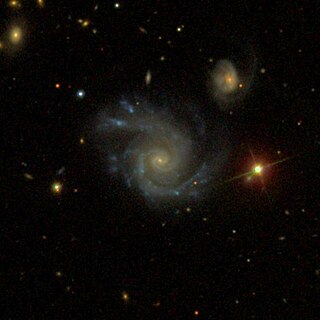
NGC 5829 is a spiral galaxy located in the constellation Boötes. It is 281 million light-years away from Earth and was discovered by astronomer, Edouard Stephan in May 1882.
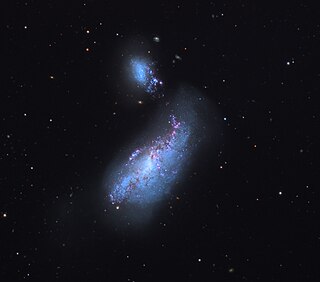
NGC 4490, also known as the Cocoon Galaxy, is a barred spiral galaxy in the constellation Canes Venatici. William Herschel discovered it in 1788. It is known to be of the closest interacting/merging galactic system. The galaxy lies at a distance of 25 million light years from Earth making it located in the local universe. It interacts with its smaller companion NGC 4485 and as a result is a starburst galaxy. NGC 4490 and NGC 4485 are collectively known in the Atlas of Peculiar Galaxies as Arp 269. The two galaxies has already made their closest approach and are rushing away from each other. It's been discovered that NGC 4490 has a double nucleus.
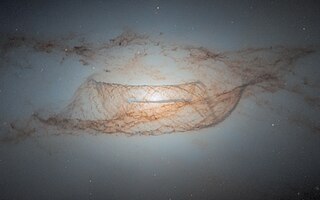
NGC 4753 is a lenticular galaxy located about 60 million light-years away in the constellation of Virgo. NGC 4753 was discovered by astronomer William Herschel on February 22, 1784. It is notable for having distinct dust lanes that surround its nucleus. It is a member of the NGC 4753 Group of galaxies, which is a member of the Virgo II Groups, a series of galaxies and galaxy clusters strung out from the southern edge of the Virgo Supercluster.

NGC 5640 is a spiral galaxy approximately 660 million light-years away from Earth in the constellation of Camelopardalis. It was discovered by British astronomer William Herschel on December 20, 1797.
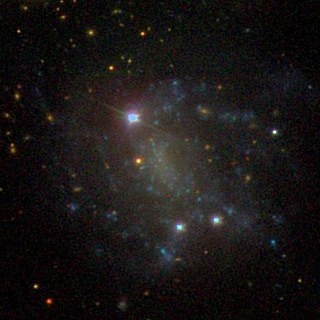
NGC 4523 is a Magellanic spiral galaxy located about 35 to 50 million light-years away in the constellation Coma Berenices. It was discovered by astronomer Heinrich d'Arrest on April 19, 1865. NGC 4523 is a member of the Virgo Cluster. A distance of for NGC 4523 was derived from using yellow supergiants in the galaxy as standard candles.
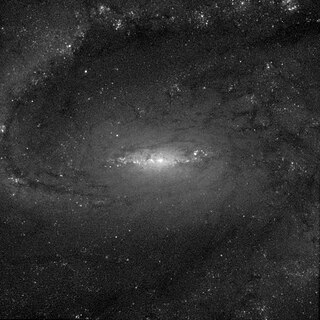
NGC 1255 is a barred spiral galaxy approximately 69 million light-years away from Earth in the constellation of Fornax.
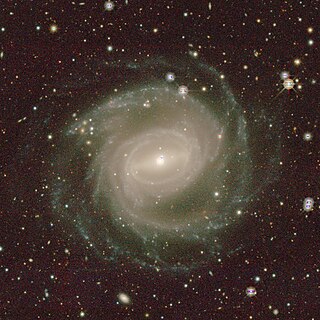
NGC 3313 is a large barred spiral galaxy located about 55 megaparsecs away in the constellation Hydra. It was discovered by astronomer Ormond Stone in 1886 and is an outlying member of the Hydra Cluster.
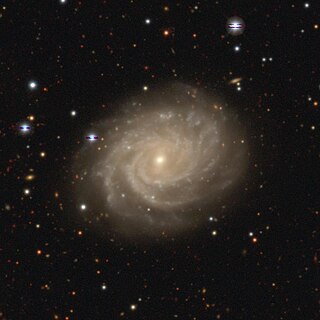
NGC 3336 is a barred spiral galaxy located about 190 million light-years away in the constellation Hydra. It was discovered by astronomer John Herschel on March 24, 1835. NGC 3336 is a member of the Hydra Cluster.
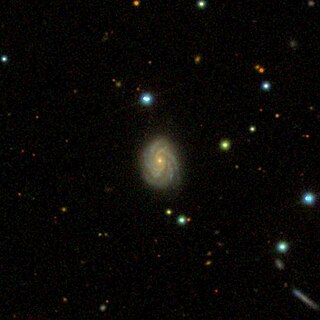
NGC 819 is a spiral galaxy approximately 302 million light-years away from Earth in the constellation of Triangulum. It forms a visual pair with the galaxy NGC 816 5.7' WNW.

NGC 1376 is a spiral galaxy located around 180 million light-years away in the constellation Eridanus. It was discovered in 1785 by William Herschel, and it is 79,000 light-years across. NGC 1376 is not known to have an active galactic nuclei, but it does have lots of star-forming regions.

NGC 7329 is a large barred spiral galaxy located in the constellation Tucana. NGC 7329 was discovered by British astronomer John Herschel in 1835.

NGC 7721 is a spiral galaxy located around 79 million light-years away in the constellation Aquarius. NGC 7721 was discovered on September 10, 1785, by the astronomer William Herschel, and its diameter is 70,000 light-years across. NGC 7721 is not known to have much star formation, and it is not known to have an active galactic nucleus. A supernova was observed in NGC 7721 in 2007, named 2007le.
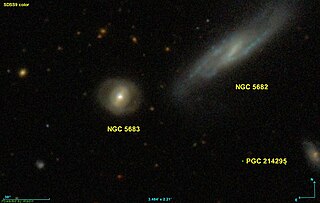
NGC 5683 is a type S0-a lenticular galaxy with a bar located in the Boötes constellation. It is 513 million light-years away from the Solar System and has an approximate diameter of 256,000 light-years meaning it is larger compared to the Milky Way. NGC 5683 was discovered by George Johnstone Stoney on April 13, 1850.

NGC 6261 is a lenticular galaxy in the constellation of Hercules. It is located 470 million light-years away from the Solar System and has an approximate diameter of 200,000 light-years.
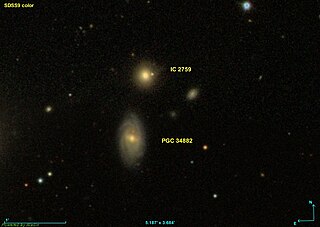
IC 2759 is a small type E elliptical galaxy located in the constellation of Leo. It is located 350 million light-years away from the Solar System and was discovered on April 24, 1897, by Guillaume Bigourdan. Sometimes IC 2759 is confused with the spiral galaxy, PGC 34882 which is located south of the galaxy.
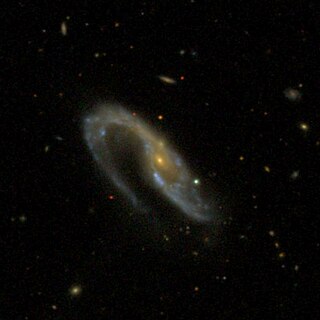
NGC 3509 known as Arp 335, is a barred spiral galaxy located in the constellation Leo. It is located 340 million light-years from the Solar System. NGC 3509 was discovered by astronomer William Herschel on December 30, 1786.
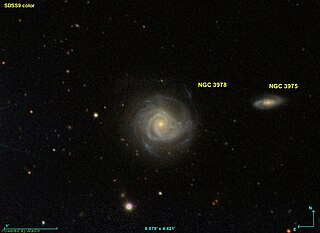
NGC 3978 is a large intermediate spiral galaxy with a bar located in the constellation of Ursa Major. It is located 460 million light-years away from the Solar System and was discovered by William Herschel on March 19, 1790, but also observed by John Herschel on April 14, 1831.
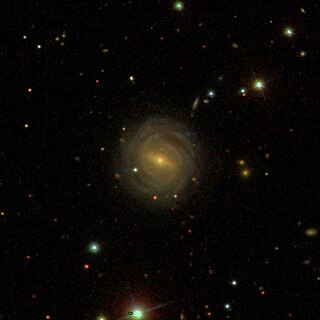
NGC 7222 is a large barred spiral galaxy with a ring structure, located in the constellation Aquarius. It is located 570 million light-years away from the Solar System and was discovered by German astronomer, Albert Marth on August 11, 1864.




















